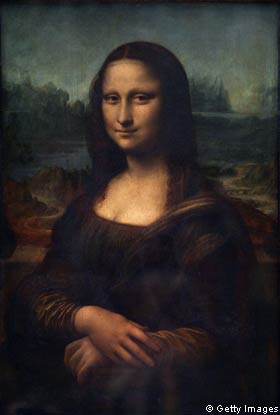It may surprise the fashion set huddling in tents in the Tuileries watching the Paris shows but one of the city’s more controversial sartorial discoveries is hanging just down the road in the Louvre museum.
Filmmaker Caroline Cocciardi, whose credits include the documentary Mona Lisa Revealed: Secrets of the Painting (2009), claims to have uncovered within the folds of “Mona Lisa”’s dress the answer to a mathematical mystery. After 20 years of research, Cocciardi says she has found evidence that Leonardo da Vinci may have made geometry history by completing one of his long-term obsessions: squaring the circle (creating a square and circle of equal area.) The result lies in a complex embroidered knot found along the neckline of the dress, she says.
Previously Da Vinci was thought to have come closest to completing this long-unsolvable problem in 1504. Jacques Franck, a Da Vinci scholar and consultant to the Louvre, explains: “In the Codex Atlanticus [Da Vinci’s writings 1478-1519] he says that he has completed a treatise on different ways of squaring circles. According to a text from his Madrid II manuscript, Leonardo’s ‘solution’ was reached on November 30 1504.”
Work on the “Mona Lisa” began in 1503 and Da Vinci had the painting in his possession when he died in 1519. Cocciardi became curious about the dress after reading reports that the style was out of fashion in 1503, and not typically used in portraits. She began looking at the knots Da Vinci painted in his portraits and drew in his manuscripts – a relatively unexplored area.
High quality global journalism requires investment. Please share this article with others using the link below, do not cut & paste the article.
She consulted with Renaissance fashion expert Carole Collier Frick, professor of history at Southern Illinois University, the Parisian photographer and engineer Pascal Cotte, and the French Centre for Research and Restoration of the Museums of France.
Cocciardi and Cotte collaborated on the travelling exhibition Da Vinci the Genius, which made headlines in 2007 when Cotte’s high-definition photograph of the “Mona Lisa” revealed that she had eyelashes and eyebrows. He also found a layer of lace over the dress that was no longer visible to the naked eye.






